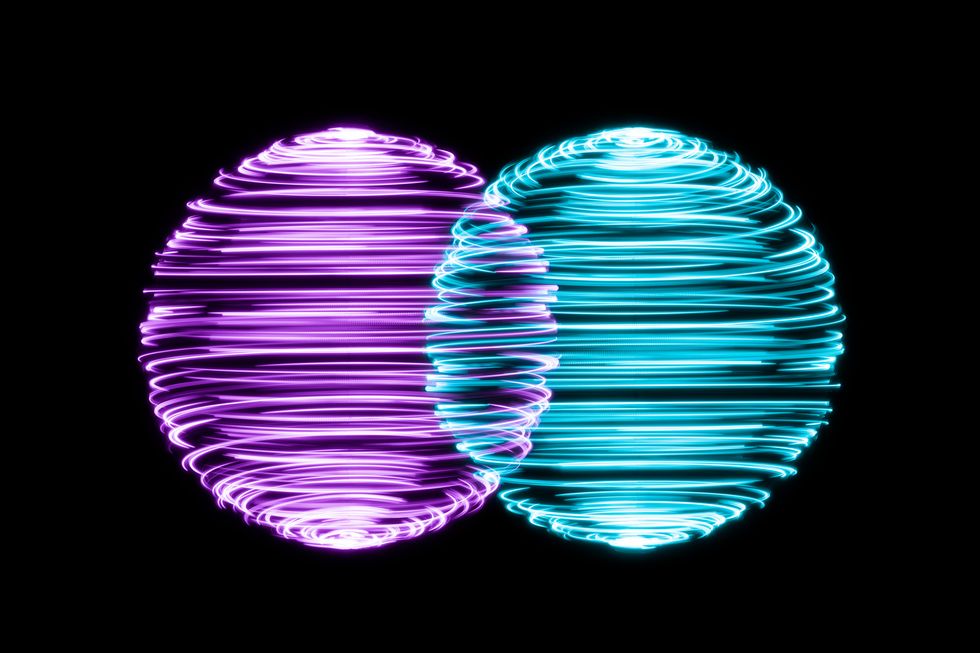How Asia Pacific is Leading the Way in Quantum Cryptography Advancements
SOURCE: HTTPS://CITYLIFE.CAPETOWN/
NOV 06, 2023
In a Mind-Bending First, Scientists Paired Two Time Crystals Together
SOURCE: POPULARMECHANICS.COM
JUN 22, 2022

The future of quantum computing could be paved with a novel form of matter: the time crystal.
In new research, scientists have found a way to link two time crystals together into a cooperative linked system. The result could be an even bigger step toward the improbable idea of a perpetual motion machine—something with wide-ranging and astronomical possibilities if it were ever realized.
Time crystals offer all the benefits of traditional quantum computing, with the added benefit of their seemingly endless energy, as described by an Aalto University team in southern Finland, which published its findings earlier this month in the journal Nature Communications. Linking two time crystals together makes it more likely that researchers can develop a quantum computer running at room temperature, a feat that’s purely aspirational at the moment.
The umbrella term, “quantum computers,” refers to ongoing research and prototypes that involve sometimes up to eight or more “bits” of particles at a time. These bits use superposition—the ability to be “in two places at once,” a concept that undergirds quantum mechanics’s penchant for efficient and fast computing calculations.
Your current home computer—while not a quantum machine—in essence does operate through a rapid series of particles firing back and forth. The machine code and user interfaces layered on top rely on these underlying electrical exchanges. Time crystals may help physicists make a breakthrough in quantum computing, leading to speedier machines than today’s. Basically, a time crystal can be used for quantum computing because it’s an improbable, almost paradoxical particle that remains in constant motion with seemingly no cause, and no end.
Scientists have known about time crystals for about ten years, and have had real examples of them since just 2016. The term “crystal” is a technical one, referring to a substance in which the particles arrange themselves in an orderly way as a result of natural factors or a current. Think of how water freezes, with crystal formation snaking away in all directions. Because the particles order themselves with geometric precision, this leads to features like naturally-occurring flat facets or regular polygonal cross-sections. That means time crystals are also defined by their adherence to the lattice structure, arranging in a pattern more regular than the peg puzzle at the Cracker Barrel.
Until now, time crystals haven’t engaged with each other in multiples; they’ve vibrated separately. In this new research, scientists for the first time have a pair of time crystals that are working as a team—a mandatory action if quantum computing with time crystals will ever become a reality.
Why is this the first time there are paired time crystals? They are a little-understood and almost brand-new phase of matter, so there’s still a wealth of research to be done before scientists fully explain how they work. And second, they are especially tricky to study. That’s because time crystals are notoriously fragile under observation, meaning as soon as we try to study them, they tend to fall out of phase. Observation, in this case, is a quantum mechanics phenomenon embodied by Heisenberg’s uncertainty principle. As soon as a system is watched and measured, it changes.
Nevertheless, it’s a cool time to be studying time crystals. The pairing off of time crystals could make a huge difference in the quest for quantum computing, or even better, the quest for room-temperature quantum computing. Certain materials and scenarios have the potential to form time crystals at far higher temperatures than the near absolute zero often required, like phenomena observed in nickel-iron alloy and even light itself.
Caroline Delbert is a writer, avid reader, and contributing editor at Pop Mech.
LATEST NEWS
Augmented Reality
Hi-tech smart glasses connecting rural and remote aged care residents to clinicians
NOV 20, 2023
WHAT'S TRENDING


Data Science
5 Imaginative Data Science Projects That Can Make Your Portfolio Stand Out
OCT 05, 2022

SOURCE: HTTPS://CITYLIFE.CAPETOWN/
NOV 06, 2023
SOURCE: HTTPS://WWW.SCIENCEDAILY.COM/
OCT 27, 2023
SOURCE: HTTPS://WWW.SCIENCEDAILY.COM/
OCT 26, 2023
SOURCE: HTTPS://THEQUANTUMINSIDER.COM/
SEP 28, 2023
SOURCE: HTTPS://TECHMONITOR.AI/
OCT 03, 2023
SOURCE: HTTPS://SCITECHDAILY.COM/
AUG 29, 2023
SOURCE: HTTPS://WWW.DIGITALJOURNAL.COM/
AUG 26, 2023
SOURCE: HTTPS://WWW.TECHTIMES.COM/
AUG 16, 2023